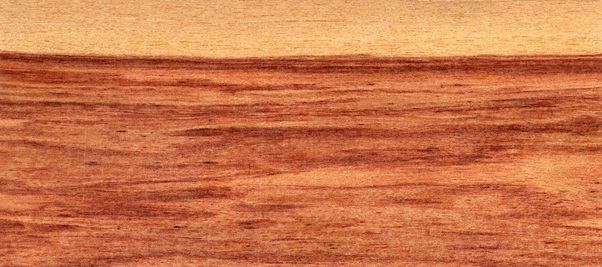The Properties of Tulipwood
Contents |
Introduction
Tulipwood is the pinkish and yellowish wood which is wielded from tulip tress found in the Eastern side of North America and parts of China. In America, the wood is referred to tulip poplar, even though the tree has no relation to the poplars. This reference is due to the trees height, which can exceed 100 feet.
Tulipwood is very light, approximately 490kg per cubic meter, but it is very strong. The wood can be stained very easily, and in some cases, is used as a low-cost alternative to walnut and cherry, particularly in furniture and doors.
Properties
The green colour of tulipwood darkens upon exposure to UV light, turning brown. It has a medium to fine texture, with the size of the sapwood and other characteristics varying upon the region it is grown in.
Tulipwood offers many beneficial properties for use:
- Low bending.
- Shock resistance.
- Offers stiff and compressed values.
- It is strong for its weight, making it ideal for laminated beams and structures.
- It is a common material due to its versatility and dimensional stability.
- It has little tendency to split when nailed.
- It holds paint, enamel and stain very well.
Brazilian Tulipwood
Brazilian Tulipwood is a different species of a very dense, high-quality wood. It is known to be yielded by Dalbergia decipularis, a species restricted to a small area in Brazil. This type of wood can come in a variety of colours within its appearance, which can be streaked with yellows, reds, oranges and pinks.
The pores on this material are open and medium-sized, with the grain straight, offering a fine texture. Brazilian Tulipwood is a common material due to its resistance to decay and insect attack. With its high density, it turns very well and holds a high polish.
Common uses for Brazilian Tulipwood include:
- Fine furniture.
- Musical instruments.
- Small turned objects.
- Veneer.
- Marquetry.
Australian Tulipwood
Australian Tulipwood is the common name of Harpullia, with certain varieties prized for their dark coloured timber. The most commonly known of this material is Harpullia pendula, which is planted along the east coast of Australia as a street tree.
As the material is tough, heavy, fine grained and highly durable, it is excellent for turnery and cabinet timber.
Common uses
Tulipwood offers many desirable characteristics, and is suitable for a wide variety of uses, such as:
- Construction.
- Interior joinery.
- Furniture.
- Kitchen cabinets.
- Doors.
- Panelling.
- Mouldings.
- Edged-glued panels.
- Plywood.
- Turning.
- Carving.
Tulipwood is the second most available species due to its mellow colour and high-performance properties, including its great stability and ease of machinery.
Related articles on Designing Buildings
- 11 things you didn't know about wood.
- A guide to the use of urban timber FB 50.
- Birch wood.
- Carpentry.
- Chip carving.
- Lime wood.
- Padauk wood.
- Physical properties of wood.
- Softwood.
- Timber.
- Timber preservation.
- Timber vs wood.
- Tree preservation order.
- Tree rights.
- Types of timber.
- Veneer.
- Walnut.
- The Properties of Wood Ash
- Pine wood
Featured articles and news
Professional practical experience for Architects in training
The long process to transform the nature of education and professional practical experience in the Architecture profession following recent reports.
A people-first approach to retrofit
Moving away from the destructive paradigm of fabric-first.
International Electrician Day, 10 June 2025
Celebrating the role of electrical engineers from André-Marie Amperè, today and for the future.
New guide for clients launched at Houses of Parliament
'There has never been a more important time for clients to step up and ...ask the right questions'
The impact of recycled slate tiles
Innovation across the decades.
EPC changes for existing buildings
Changes and their context as the new RdSAP methodology comes into use from 15 June.
Skills England publishes Sector skills needs assessments
Priority areas relating to the built environment highlighted and described in brief.
BSRIA HVAC Market Watch - May 2025 Edition
Heat Pump Market Outlook: Policy, Performance & Refrigerant Trends for 2025–2028.
Committing to EDI in construction with CIOB
Built Environment professional bodies deepen commitment to EDI with two new signatories: CIAT and CICES.
Government Grenfell progress report at a glance
Line by line recomendation overview, with links to more details.
An engaging and lively review of his professional life.
Sustainable heating for listed buildings
A problem that needs to be approached intelligently.
50th Golden anniversary ECA Edmundson apprentice award
Deadline for entries has been extended to Friday 27 June, so don't miss out!
CIAT at the London Festival of Architecture
Designing for Everyone: Breaking Barriers in Inclusive Architecture.
Mixed reactions to apprenticeship and skills reform 2025
A 'welcome shift' for some and a 'backwards step' for others.






















